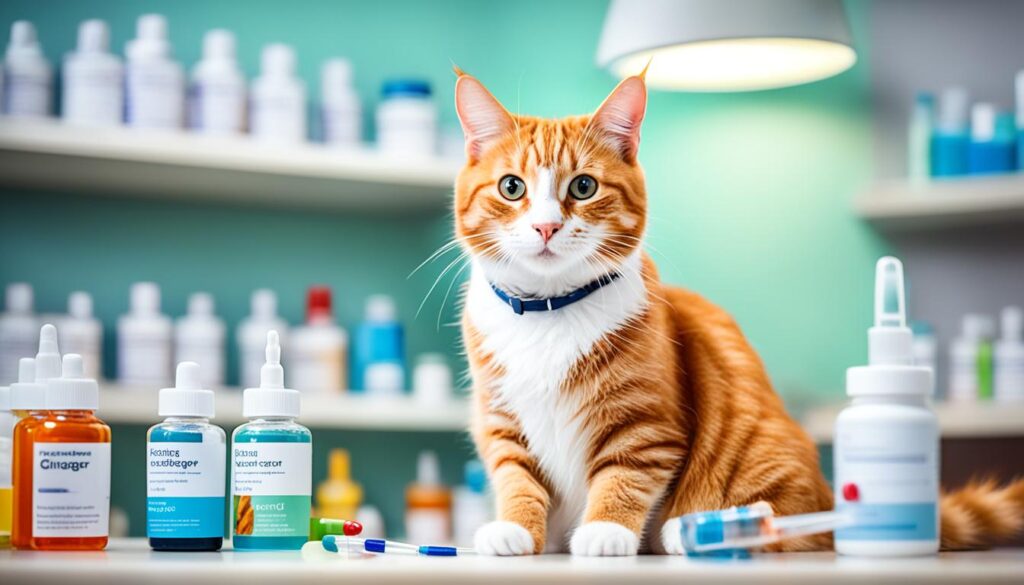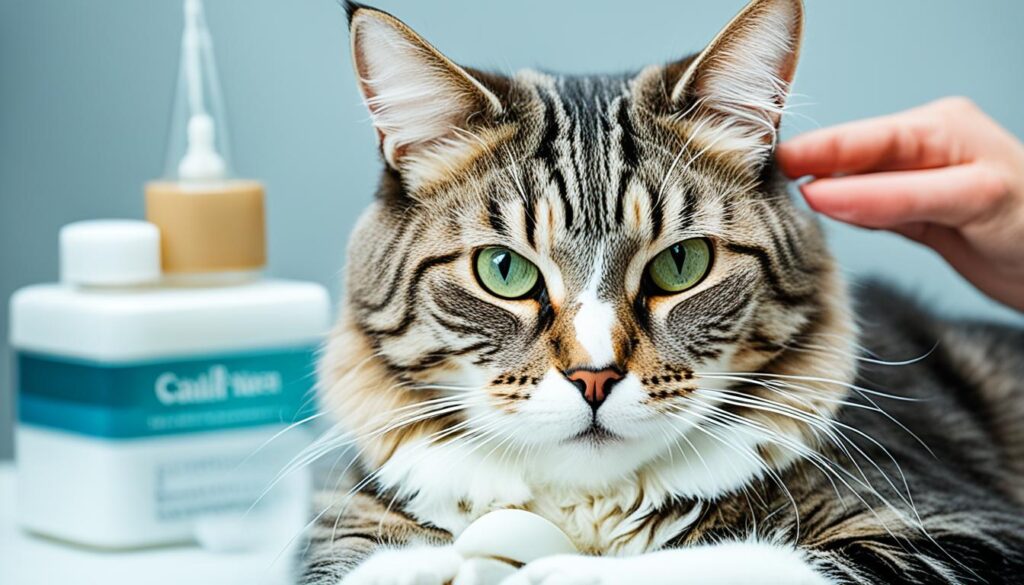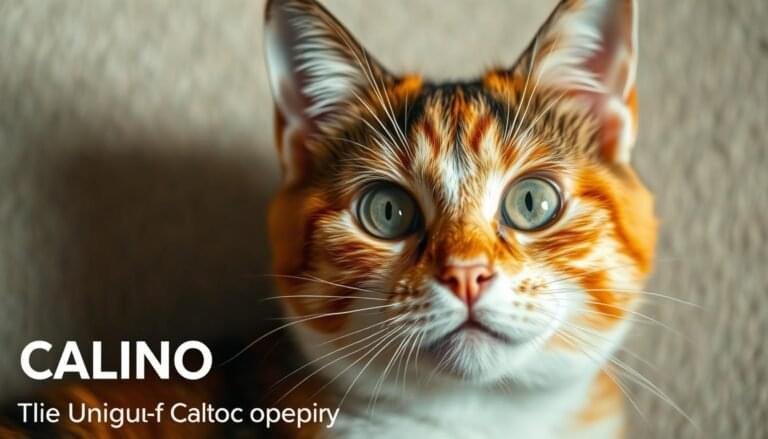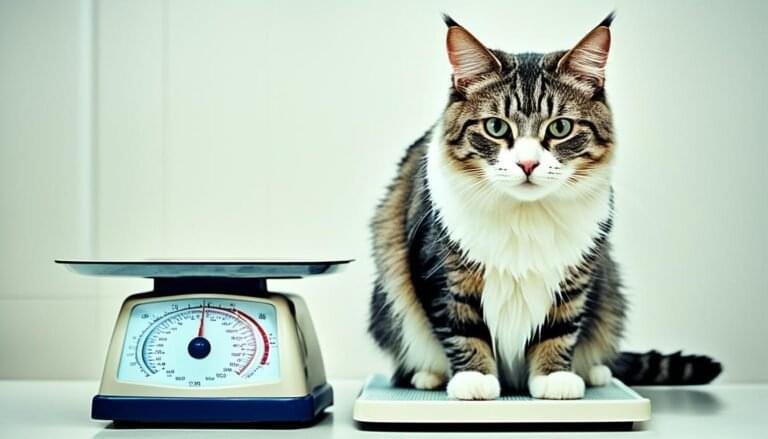How To Give A Cat Liquid Medicine? Key Takeaways:
- Administering liquid medication to cats can be challenging but is crucial for their health.
- Methods such as mixing medication with canned food or administering it directly into the mouth can be effective.
- Prioritize your cat’s safety and comfort during the medication administration process.
- Follow your veterinarian’s recommendations and consult them for any concerns or difficulties.
- Individual cats may require different techniques, so be adaptable and attentive to their needs.
Mixing Medication with Canned Food
One of the easiest ways to give your cat liquid medication is to mix it in with some canned food. This method works best for cats who are willing to eat the food and do not have dietary restrictions that prevent them from using this technique. To ensure that your cat swallows all of the medication, it is important to follow these tips:- Mix the medication into a small amount of canned food: Instead of mixing the medication into a full bowl of food, only mix it into a small portion that you can feed by hand. This way, you can ensure that your cat consumes all of the medication without leaving any behind.
- Feed the canned food by hand: By feeding your cat the medicated food directly from your hand, you can closely monitor their eating and make sure that they ingest the entire dose.
Administering Medication Directly into the Mouth
If your cat is unwilling to eat the food or has dietary restrictions that prevent you from using the mixing method, you will need to administer the medication directly into the cat’s mouth. Before doing so, prepare an area where you can safely handle your cat and have the medication ready and easily accessible. It may be helpful to have someone assist you in restraining the cat by wrapping it in a blanket or towel with only its head exposed. Hold the syringe or dropper containing the medication with your dominant hand and carefully place the tip in the cat’s mouth, just behind one of the canine teeth. Be sure to angle the syringe slightly to the side to deposit the medication onto the tongue, rather than forcefully injecting it into the back of the throat.Step-by-Step Guide: Administering Medication Directly into the Mouth
- Prepare a safe and quiet area where you can handle your cat without distractions or disturbances.
- Have the medication ready and easily accessible. Ensure that you have the correct dosage and follow the instructions provided by your veterinarian.
- If necessary, enlist the help of someone to assist in restraining the cat, ensuring their safety and minimizing stress.
- While holding the syringe or dropper with your dominant hand, gently grasp the cat’s head, keeping it still and stable.
- Slide the tip of the syringe or dropper into the cat’s mouth, just behind one of the canine teeth.
- Angle the syringe or dropper slightly to the side, aiming toward the center of the tongue.
- Depress the plunger or squeeze the bulb to release the medication slowly and progressively.
- Allow the cat to swallow the medication before releasing and withdrawing the syringe or dropper.
- Offer praise and a reward, such as a treat, to help create a positive association with the medication administration process.
- Thoroughly clean the syringe or dropper with water after each use to maintain hygiene.
Tips for Successful Medication Administration
When it comes to giving your cat liquid medication, there are some tips and techniques that can help make the process easier and more successful. It’s important to provide proper cat care for liquid medication to ensure your furry friend receives the treatment they need. Below are some useful techniques for administering liquid medication to cats:- Warm the medication: Before administering the liquid medication, it can be helpful to warm it to room temperature. Many cats are more accepting of medication when it is not cold, so warming it up can make the process smoother.
- Positive reinforcement: Throughout the medication administration process, give your cat plenty of praise and reassurance. This positive reinforcement can help create a more positive experience for your cat and make them more cooperative during future administrations.
- Special treats: Offering a special treat after giving the medication can be a great way to reward your cat for their cooperation. Choose a treat that is approved by your veterinarian to ensure it is safe and appropriate for your cat’s dietary needs.
- Spitting out medication: It’s important to note that most cats will spit out some of the medication, even if administered correctly. If you are certain that none of the medication was swallowed, you can consider re-medicating. However, always consult with your veterinarian before doing so.
- Proper cleaning: After each use, thoroughly rinse the dropper or syringe with water to clean it. This helps prevent any residue or contamination that could affect the effectiveness of future administrations.
- Refrigeration of medication: If necessary, refrigerate any remaining medication as instructed by your veterinarian. This ensures the stability and efficacy of the medication.
Proper Technique for Medication Administration
When it comes to dosing cats with liquid medicine, proper technique is essential for effective and safe administration. Follow these steps to ensure a successful medication experience for both you and your feline companion:- First, hold your cat’s head gently but securely with one hand. This will help keep them still during the medicating process.
- Next, insert the dropper or syringe into the corner of your cat’s mouth, between the cheek and the teeth. Aim towards the back of the cat’s head, but avoid tilting their head back, as this can cause them to inhale the medicine.
- Squeeze the dropper or depress the syringe plunger to empty the medication. Take care to do this slowly and steadily to avoid overwhelming your cat.
- After administering the medication, hold your cat’s mouth closed gently. Then, stroke their throat or gently blow on their nose to encourage swallowing.
- Finally, reward your cat with a treat approved by your veterinarian. This positive reinforcement will help make the experience more pleasant for your furry friend.
Proper Technique for Medication Administration
| Step | Description |
|---|---|
| 1 | Hold your cat’s head gently but securely with one hand. |
| 2 | Insert the dropper or syringe into the corner of your cat’s mouth, between the cheek and the teeth. Aim towards the back of the cat’s head, but avoid tilting their head back. |
| 3 | Squeeze the dropper or depress the syringe plunger to empty the medication. Take care to do this slowly and steadily. |
| 4 | Hold your cat’s mouth closed gently. Then, stroke their throat or gently blow on their nose to encourage swallowing. |
| 5 | Reward your cat with a treat approved by your veterinarian. |
The Importance of Following Veterinarian Recommendations
 When it comes to administering oral medication to cats, it is crucial to follow the recommendations of your veterinarian. Your veterinarian plays a vital role in ensuring the health and well-being of your feline companion, and their instructions should be followed carefully to achieve the desired treatment outcomes.
Here are some key reasons why it is important to adhere to your veterinarian’s recommendations:
When it comes to administering oral medication to cats, it is crucial to follow the recommendations of your veterinarian. Your veterinarian plays a vital role in ensuring the health and well-being of your feline companion, and their instructions should be followed carefully to achieve the desired treatment outcomes.
Here are some key reasons why it is important to adhere to your veterinarian’s recommendations:
- Accuracy of Dosage: Veterinarians determine the appropriate dosage of medication based on factors such as your cat’s weight, age, and overall health condition. Following their instructions ensures that your cat receives the correct amount of medication for effective treatment without any risk of overdose or underdose.
- Medication Suitability: Veterinarians prescribe medications that are specifically formulated for cats and tailored to address their specific health issues. Using medications prescribed for other animals or relying on over-the-counter products can be dangerous and ineffective.
- Treatment Completion: Cats may show signs of improvement before the prescribed treatment duration is completed. However, discontinuing medication prematurely can lead to recurrent or worsened conditions. It is crucial to complete the full course of treatment as advised by your veterinarian to maximize its effectiveness.
Consulting Your Veterinarian:
If you have any concerns or questions about administering oral medication to your cat, it is important to consult your veterinarian promptly. They can provide clarification and guidance, ensuring that you administer the medication correctly and address any challenges you may encounter. Remember, your veterinarian is your best resource for information and advice on cat care, including the administration of liquid medications. By following their recommendations, you can ensure the well-being of your cat and optimize the effectiveness of the prescribed treatment.| Benefits of Following | Veterinarian Recommendations |
|---|---|
| 1. Accuracy of Dosage | Ensure the correct amount of medication is given |
| 2. Medication Suitability | Prescribed medications specifically for cats |
| 3. Treatment Completion | Finish the full course of treatment for optimal results |
Considering Compounding for Easy Administration
If you have difficulty giving your cat pills or capsules, there is an alternative solution that can make medication administration much simpler and more convenient for both you and your furry friend. Compounding involves changing the medication into a different formulation that is easier to administer, such as a liquid. This can eliminate the struggle of handling cat liquid meds and provide a stress-free experience for both you and your cat. When faced with the challenge of administering liquid medication to cats, compounding allows you to tailor the medication to your cat’s specific needs. By working with your veterinarian, you can explore the option of compounding and discuss the possibility of converting the medication into a liquid form. The benefits of compounding extend beyond ease of administration. Many cats are more receptive to liquids, making it easier to ensure they receive the necessary dosage. Compounded medications can also be flavored to improve palatability, making it more likely that your cat will willingly consume the medication. When considering compounding, it is important to consult your veterinarian to ensure that the specific medication your cat requires can be safely and effectively compounded. Not all medications are suitable for compounding, so it is essential to seek professional guidance. Table: Pros and Cons of Compounding for Medication Administration| Pros | Cons |
|---|---|
| Easy administration | Requires veterinary consultation |
| Improved palatability | Not all medications can be compounded |
| Customized dosage | Potential for increased cost |
| Reduced stress for both cat and owner |
Ensuring Safety and Comfort for Your Cat
 When administering liquid medication to your cat, ensuring their safety and comfort should be your priority. By creating a conducive environment and taking necessary precautions, you can make the medication administration process less stressful for both you and your feline companion.
I highly recommend preparing a calm and quiet space where you can handle your cat safely. This can help reduce any potential anxiety or fear that your cat may experience during the process.
If needed, consider enlisting the assistance of another person to help restrain the cat while you administer the medication. They can help hold your cat securely, allowing you to focus on properly delivering the medication.
Remember, cats can be sensitive to their surroundings, so choose a location where they feel most comfortable. Minimize distractions and loud noises that might startle or agitate your cat during the medication administration process.
By prioritizing your cat’s safety and comfort, you can create a positive experience for both of you, promoting a trusting relationship and ensuring that the medication is administered effectively.
When administering liquid medication to your cat, ensuring their safety and comfort should be your priority. By creating a conducive environment and taking necessary precautions, you can make the medication administration process less stressful for both you and your feline companion.
I highly recommend preparing a calm and quiet space where you can handle your cat safely. This can help reduce any potential anxiety or fear that your cat may experience during the process.
If needed, consider enlisting the assistance of another person to help restrain the cat while you administer the medication. They can help hold your cat securely, allowing you to focus on properly delivering the medication.
Remember, cats can be sensitive to their surroundings, so choose a location where they feel most comfortable. Minimize distractions and loud noises that might startle or agitate your cat during the medication administration process.
By prioritizing your cat’s safety and comfort, you can create a positive experience for both of you, promoting a trusting relationship and ensuring that the medication is administered effectively.
Tips for Ensuring Safety and Comfort
| Tip | Description |
|---|---|
| Create a calm environment | Choose a quiet and familiar space where your cat feels most comfortable. |
| Enlist assistance if needed | If your cat requires additional restraint, have a trusted person help you hold them during medication administration. |
| Minimize distractions | Avoid loud noises or sudden movements that could startle or agitate your cat during the process. |
The Challenge of Medicating Uncooperative Cats
Administering liquid medication to cats can be a challenging task, especially when dealing with uncooperative or resistant feline patients. However, there are techniques you can use to make the process easier and more manageable.Alternative Techniques for Medication Administration
If your cat is uncooperative during medication administration, you can consider using additional techniques to help keep them still and ensure successful dosing. One helpful method is to wrap the cat in a blanket or towel, securely but gently, exposing only their head. This can help restrict their movement and make it easier for you to administer the liquid medication. By immobilizing them in this way, you can work safely and efficiently to give them the necessary dose without causing them undue stress or discomfort. However, it’s important to prioritize your cat’s safety and well-being throughout the process. If your cat becomes extremely agitated or stressed despite your efforts, it’s recommended to consult with your veterinarian for alternative methods of medication administration. They can provide guidance and suggest different techniques that may be more suitable for your particular feline companion.Personalized Approach for Better Results
Every cat is unique, and what works for one may not work for another. It’s essential to adapt and modify the techniques based on your cat’s individual temperament and preferences. By paying attention to their cues and adjusting your approach, you can ensure their comfort and cooperation during medication administration. Remember to stay patient and provide plenty of reassurance and positive reinforcement throughout the process. Offering treats approved by your veterinarian can help create a positive association with the medication experience, making it easier for both you and your cat. By utilizing these techniques and tailoring your approach to your cat’s needs, you can overcome the challenge of medicating uncooperative cats and ensure they receive the necessary liquid medication for their health and well-being.Adapting Techniques for Individual Cats
Each cat is unique and may respond differently to medication administration techniques. It is important to understand your cat’s individual temperament and preferences when handling cat liquid meds. By paying attention to cues from your cat during the process, you can adapt and modify the techniques to ensure their comfort and cooperation. Here are some tips:1. Observe and Assess
Take the time to observe your cat’s behavior and reactions during medication administration. Note any signs of discomfort, resistance, or stress. This will help you understand what techniques work best for your cat and what adjustments may be necessary.2. Gradual Introduction
If your cat is particularly apprehensive about medication, consider gradually introducing them to the process. Start by offering treats or rewards while gently handling their mouth and tongue. This can help desensitize them to the sensation and make future medication administration easier.3. Individual Preferences
Just like humans, cats have individual preferences. Some cats may be more comfortable with a particular administration method, while others may respond better to alternative approaches. Experiment with different techniques, such as using a syringe versus a dropper, to find what works best for your cat.4. Positive Reinforcement
Positive reinforcement can go a long way in encouraging your cat’s cooperation during medication administration. Offer praise, gentle petting, or a favorite treat after each successful administration. This will help create a positive association with the process and make subsequent doses easier to administer.5. Seek Professional Guidance
If you are struggling to adapt techniques for your cat or if they consistently resist medication administration, consult your veterinarian. They can provide further advice tailored to your cat’s specific needs and may suggest alternative medication options or administration methods.6. Patience and Persistence
Administering liquid medication to cats can be a journey that requires patience and persistence. Remember to stay calm, be gentle, and approach each administration with a positive mindset. The more you practice and adapt, the better you will become at handling cat liquid meds. By adapting medication administration techniques to suit your cat’s individual needs, you can ensure a smoother and more comfortable experience for both you and your feline companion.| Technique | Advantages | Considerations |
|---|---|---|
| Mixing medication with food | – Easier for cats who willingly eat the mixed food – Helps mask the taste of the medication | – Some cats may not eat all of the food, resulting in incomplete medication ingestion – Cats with dietary restrictions may not be suitable for this method |
| Administering medication directly into the mouth | – Ensures precise dosage – Direct delivery to the cat’s system | – Requires restraint techniques for uncooperative cats – May be challenging if the cat dislikes the taste or texture of the medication |
| Compounding medication into a liquid form | – Facilitates easier administration – May improve acceptance for cats resistant to pills or capsules | – Availability of compounding options may vary depending on the medication – Additional costs may be involved |
Cleaning and Storing Medication Supplies
Properly cleaning and storing medication supplies is essential for maintaining the effectiveness of the medication and preventing contamination. Follow these steps to ensure the safe administration of oral medication to your cat:Cleaning the Dropper or Syringe
After each use, it is important to clean the dropper or syringe thoroughly to remove any residue. This helps prevent the buildup of medication that can affect the accuracy of future doses. Follow these steps:- Remove the plunger from the syringe, if possible.
- Rinse the dropper or syringe with warm water to remove any remaining medication.
- If necessary, use a small brush or pipe cleaner to clean any hard-to-reach areas.
- Rinse the dropper or syringe again to ensure all traces of medication are removed.
- Allow the dropper or syringe to air dry completely before storing.
Storing the Medication
Proper storage of the medication is crucial to maintain its potency. Follow these guidelines:- Check the medication label for specific storage instructions.
- If refrigeration is required, store the medication in a designated area of the refrigerator away from food and other items.
- Do not freeze the medication unless instructed to do so by your veterinarian.
- Keep the medication out of reach of children and pets.
Guidelines for Cleaning and Storing Medication Supplies
| Step | Cleaning the Dropper or Syringe | Storing the Medication |
|---|---|---|
| 1 | Remove the plunger from the syringe, if possible. | Check the medication label for specific storage instructions. |
| 2 | Rinse the dropper or syringe with warm water to remove any remaining medication. | If refrigeration is required, store the medication in a designated area of the refrigerator away from food and other items. |
| 3 | If necessary, use a small brush or pipe cleaner to clean any hard-to-reach areas. | Do not freeze the medication unless instructed to do so by your veterinarian. |
| 4 | Rinse the dropper or syringe again to ensure all traces of medication are removed. | Keep the medication out of reach of children and pets. |
| 5 | Allow the dropper or syringe to air dry completely before storing. |
Conclusion
Administering liquid medication to cats can be a challenge, but with the right techniques and proper care, it can become a manageable and stress-free process for both you and your feline companion. By following the recommendations of your veterinarian and prioritizing your cat’s safety and comfort, you can ensure the successful administration of liquid medication. Remember to adapt the techniques to suit your cat’s individual temperament and preferences. Some cats may be more cooperative with medication when it is mixed with their food, while others may need to have it administered directly into their mouth. Pay attention to your cat’s cues and adjust your approach accordingly. Maintaining the overall health and well-being of your cat is of utmost importance. By implementing the strategies discussed in this article, such as mixing medication with canned food, administering medication directly into the mouth, and ensuring proper technique, you can provide the necessary care for your cat’s medical needs. With patience, praise, and rewards, you can make the experience more positive for both you and your beloved feline friend.FAQ
How can I give my cat liquid medicine?
There are several methods you can use to give your cat liquid medicine, including mixing it with canned food or administering it directly into the mouth. It is important to carefully read the prescription label and follow the dosing instructions to ensure the proper administration of the medication.
Can I mix the medication with my cat’s food?
Yes, one of the easiest ways to give your cat liquid medication is to mix it in with some canned food. However, it is important to ensure that your cat swallows all of the medication. To do this, mix the medication into a small amount of canned food that you feed by hand, rather than mixing it into a full bowl of food that the cat may not completely eat.
What should I do if my cat refuses to eat the food with the medication?
If your cat is unwilling to eat the food or has dietary restrictions that prevent you from using the mixing method, you will need to administer the medication directly into the cat’s mouth. Before doing so, prepare an area where you can safely handle your cat and have the medication ready and easily accessible.
How do I administer medication directly into my cat’s mouth?
Hold the syringe or dropper containing the medication with your dominant hand and carefully place the tip in the cat’s mouth, just behind one of the canine teeth. Be sure to angle the syringe slightly to the side to deposit the medication onto the tongue, rather than forcefully injecting it into the back of the throat.
What are some tips for successful medication administration to cats?
It may be helpful to warm the medication to room temperature before administering it, as many cats accept medication more readily when it is not cold. Additionally, giving your cat plenty of praise throughout the procedure and offering a special treat afterwards can make the experience more positive.
What is the proper technique for administering liquid medication to cats?
Hold your cat’s head still with one hand and insert the dropper or syringe into the corner of the mouth, between the cheek and the teeth, aiming towards the back of the cat’s head. Do not tilt the cat’s head back, as this can cause them to inhale the medicine.
Why is it important to follow veterinarian recommendations when administering liquid medication to cats?
It is crucial to follow the recommendations of your veterinarian when administering liquid medication to your cat. Only use medicines prescribed specifically for your cat and treat for the full length of time prescribed, even if the problem seems to be resolved.
Can medication be compounded into a liquid form for easier administration?
If you have difficulty giving your cat pills or capsules, ask your veterinarian if the medication can be compounded into a liquid form. Compounding involves changing the medication into a different formulation that is easier to administer, such as a liquid.
How can I ensure the safety and comfort of my cat during medication administration?
It is important to prioritize your cat’s safety and comfort when administering liquid medication. Prepare the environment in a way that allows you to handle your cat safely, and consider having someone assist you in restraining them if needed. Providing a calm and quiet space can help reduce stress for both you and your cat.
What should I do if my cat is uncooperative during medication administration?
Some cats may be uncooperative or resistant to medication administration. If this is the case, it may be helpful to use additional techniques such as wrapping the cat in a blanket or towel to keep them more still during the process. However, it is important to always prioritize the safety and well-being of your cat and consult with your veterinarian if necessary.
Do I need to adapt medication administration techniques for each cat?
Each cat is unique and may respond differently to medication administration techniques. It may be necessary to adapt and modify the techniques based on your cat’s individual temperament and preferences. Pay attention to cues from your cat during the process and adjust accordingly to ensure their comfort and cooperation.
How should I clean and store medication supplies?
After each use, rinse the dropper or syringe with water to clean it thoroughly. If necessary, refrigerate any remaining medication as instructed by your veterinarian. Properly cleaning and storing the medication supplies can help ensure their effectiveness and prevent contamination.
References
|
International Cat Association (TICA) |
|
|
The Cat Fanciers’ Association (CFA) |
|
|
World Cat Federation (WCF) |
|
|
Fédération Internationale Féline (FIFe) |








[…] experience. Not only are you providing a loving home to a feline friend, but you are also giving a shelter cat a second chance at a happy life. Before embarking on the journey of adoption, it is essential to […]
[…] more likely to bite feet when they are bored or understimulated. Interactive playtime with your cat gives them an outlet for their energy and satisfies their natural hunting instincts. It’s important […]
[…] pregnant cat can give birth to four to six kittens during their two-month gestation […]
[…] for a thyroid scan may be necessary for a definitive diagnosis. These tests can provide more detailed information about the cat’s thyroid function and aid in treatment […]